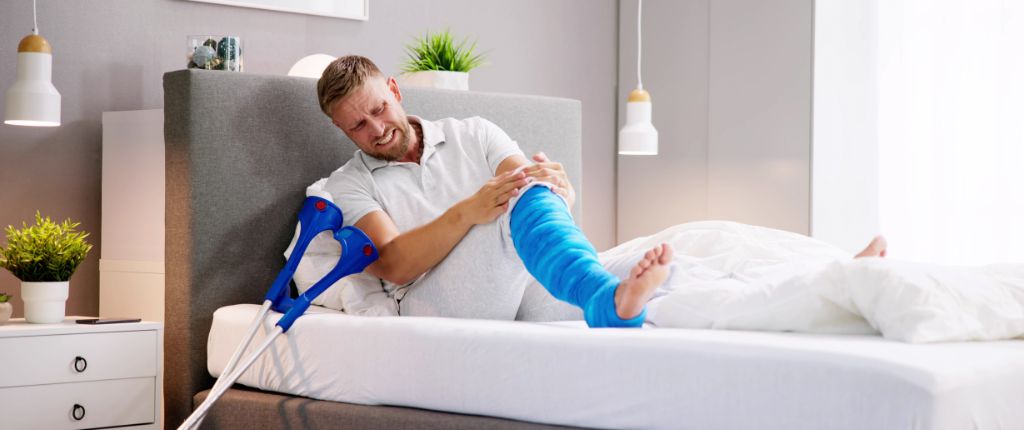When it comes to injury recovery, immobilization is key. For years, traditional casts and splints have been the go-to methods, providing support to healing bones and joints. However, times have changed, and newer technologies are stepping into the spotlight. One such advancement is the OrthoHeal FlexiOH Immobilizer. In this article, we’ll take a deep dive into how the OrthoHeal FlexiOH Immobilizer compares to traditional casts and splints, exploring their differences in material, design, application, effectiveness, and more. Let’s see which option might be better for your injury recovery needs.
Introduction to OrthoHeal FlexiOH Immobilizer and Traditional Casting Methods
Injuries, especially fractures, require proper immobilization to ensure effective healing. Traditional casting methods, like fibreglass or plaster casts, have long been used in medical settings. They’re rigid and protective, and provide the necessary support to help bones mend. But as medicine and technology have progressed, so too have our options for treating injuries.
Enter the OrthoHeal FlexiOH Immobilizer—a revolutionary alternative designed to offer similar support while enhancing comfort, mobility, and overall patient experience. Before we compare, let’s take a quick look at both systems.

Material and Design Differences
OrthoHeal FlexiOH Immobilizer:
The FlexiOH Immobilizer is made from a breathable, lightweight material that moulds snugly around the affected area. Unlike traditional casts, the FlexiOH is designed with both comfort and practicality in mind. The material is soft yet firm enough to immobilize the injury, and it’s far less bulky than traditional options.
Traditional Casts and Splints:
On the other hand, traditional casts are made from materials like plaster or fibreglass, which harden over time. While they provide solid support, they come with a few drawbacks—mainly their weight, rigidity, and lack of breathability.
The Advantages of FlexiOH’s Materials and Design:
One of the primary advantages of the FlexiOH Immobilizer is its weight. Traditional casts can feel heavy and uncomfortable, especially over long periods. FlexiOH, being lightweight and breathable, allows the skin to ventilate, reducing the risk of irritation or infection. It also makes daily life a little easier—whether you’re at work, school, or home, you’re not dragging around a bulky cast.
Comparative Comfort and Durability:
Comfort is a big factor here. Traditional casts are notorious for itching, odour, and discomfort, especially in hot weather. FlexiOH tackles these issues with its ventilated design. Moreover, its durability is commendable; while traditional casts may crack or break, FlexiOH’s design is sturdy enough to last throughout your recovery period.

Application and Removal Process
OrthoHeal FlexiOH Immobilizer Application:
Applying the FlexiOH Immobilizer is a straightforward process. It can be done in a matter of minutes by healthcare professionals. The immobilizer is slipped over the injured limb and then fitted with a firm outer layer that keeps the injury stable.
Traditional Casts and Splints:
Traditional casts require a multi-step process. Plaster or fibreglass is soaked in water and applied around the limb, then moulded as it dries and hardens. It’s a lengthier process and often messier.
Ease of Application and Removal:
One of the standout features of FlexiOH is how easy it is to both apply and remove. Traditional casts need to be cut off with a specialized saw, which can be an uncomfortable experience. FlexiOH, however, can be easily removed without causing discomfort. This makes doctor visits quicker and less stressful for patients.

Effectiveness and Patient Outcomes
When it comes to effectiveness, both the OrthoHeal FlexiOH Immobilizer and traditional casts get the job done in terms of stabilizing injuries. But how do they compare in healing outcomes and patient satisfaction?
Healing Outcomes:
Studies show that the FlexiOH is just as effective as traditional casts in promoting bone and tissue healing. In fact, patients using FlexiOH often report fewer complications like skin irritation, pressure sores, or swelling.
Patient Testimonials and Case Studies:
Many patients have praised the OrthoHeal FlexiOH Immobilizer for its comfort and ease of use. Testimonials highlight how it allows more freedom of movement without compromising the immobilization necessary for healing. Comparatively, traditional casts are often seen as cumbersome and restrictive.
Clinical Studies and Expert Opinions:
Experts agree that while traditional casts have stood the test of time, innovations like the FlexiOH are providing equally reliable—and often more patient-friendly—alternatives. For those who lead active lives, the ability to maintain some degree of mobility without sacrificing safety is a game-changer.

Cost, Accessibility, and Patient Considerations
Cost Comparison:
When it comes to cost, the OrthoHeal FlexiOH Immobilizer can be a bit pricier than traditional casts, depending on your location and healthcare provider. However, considering the comfort and convenience it offers, many patients find the investment worthwhile.
Insurance Coverage:
Most insurance plans that cover traditional casts will also cover the FlexiOH Immobilizer, but it’s always a good idea to check with your provider to avoid surprises. Some providers may require additional paperwork, especially for newer treatments like FlexiOH.
Availability in Healthcare Markets:
While traditional casts are widely available and familiar to most healthcare providers, FlexiOH is gaining traction quickly and becoming more accessible across clinics and hospitals. As its popularity grows, you can expect it to be an option offered more frequently.
Patient Preferences and Feedback:
Ultimately, the choice between a traditional cast and the OrthoHeal FlexiOH Immobilizer often comes down to patient preference. Those who value comfort, breathability, and convenience tend to favor FlexiOH. Traditional casts, while effective, are often seen as less comfortable, particularly over extended periods.
Final Thoughts
While traditional casts have long been the standard for injury immobilization, the OrthoHeal FlexiOH Immobilizer offers a compelling alternative that prioritizes comfort, ease of use, and patient experience. Whether you’re recovering from a fracture or any other injury requiring immobilization, FlexiOH is worth considering for a smoother recovery process.
For more in-depth medical advice or to explore other treatment options, check out this benefits on choosing the right immobilization method.
Which one would you choose for your recovery journey? Let me know in the comments!

